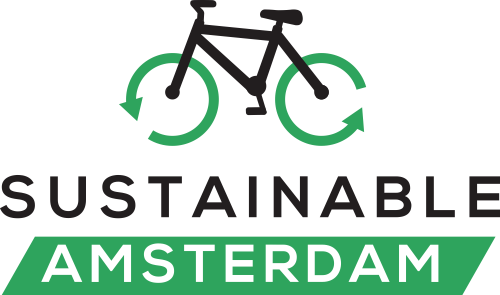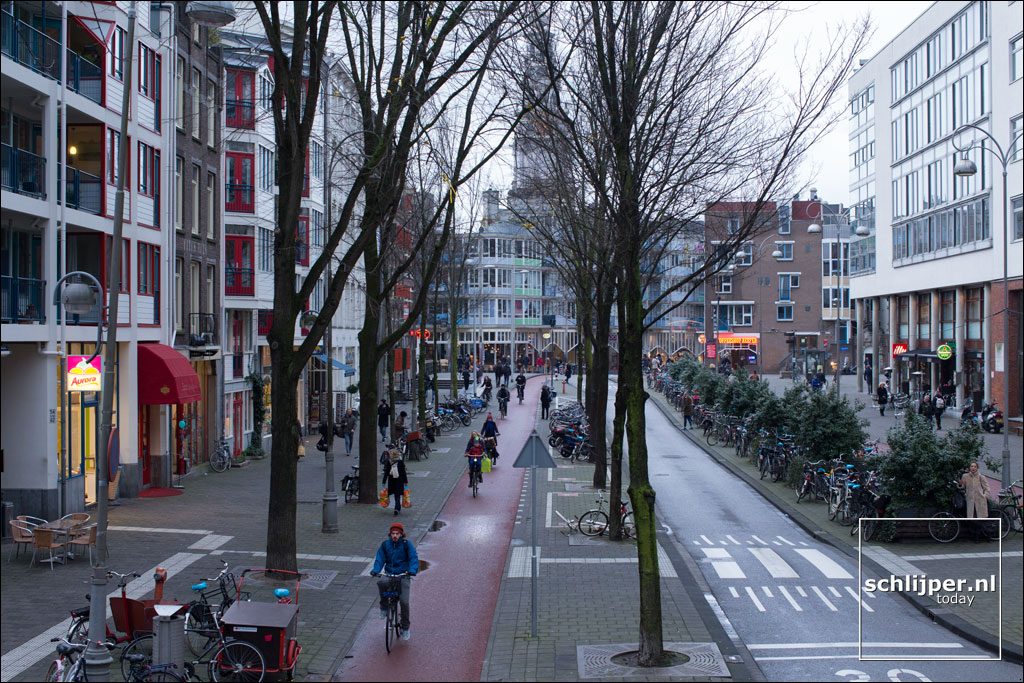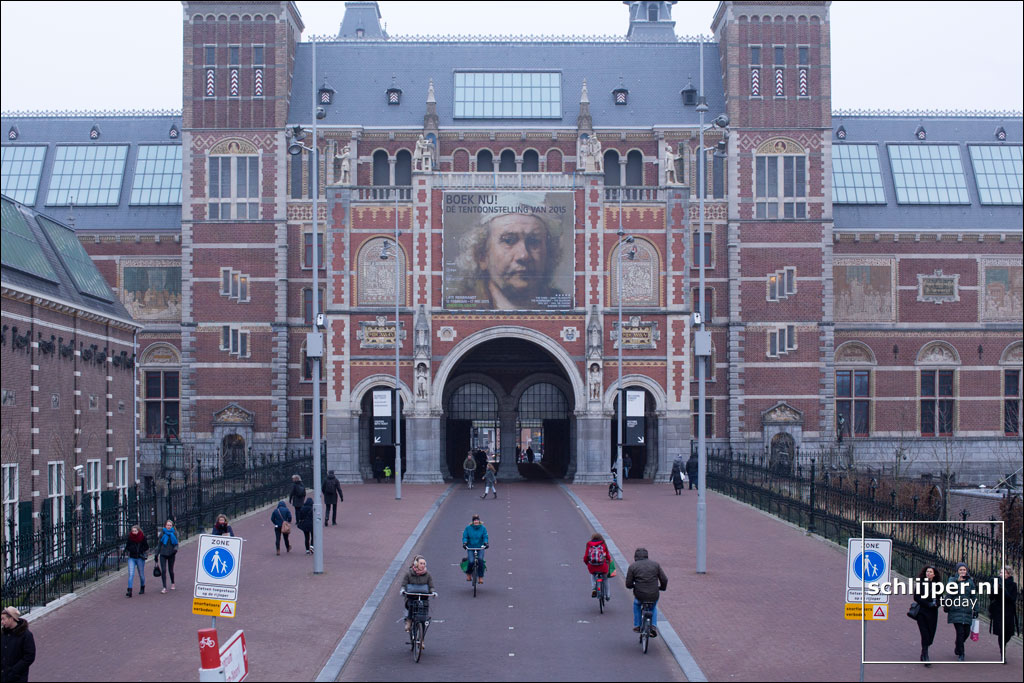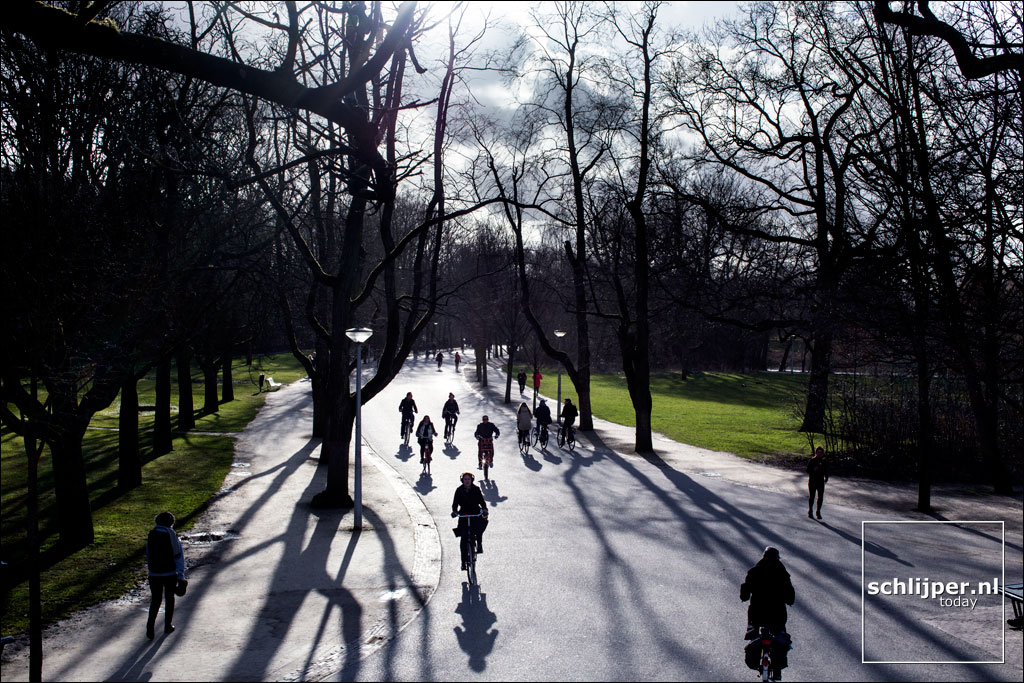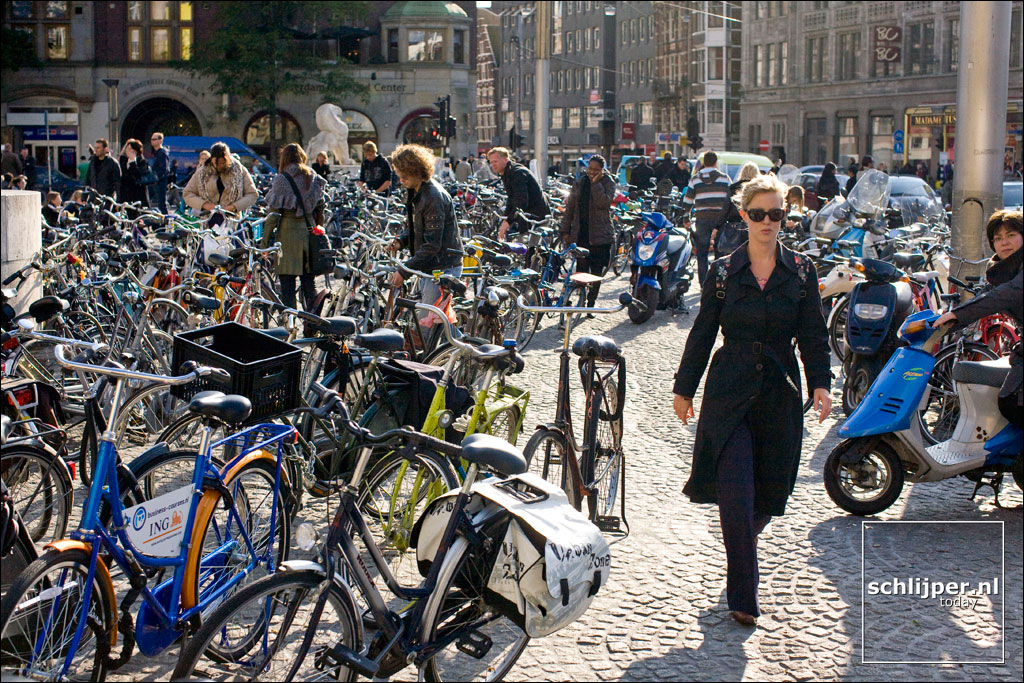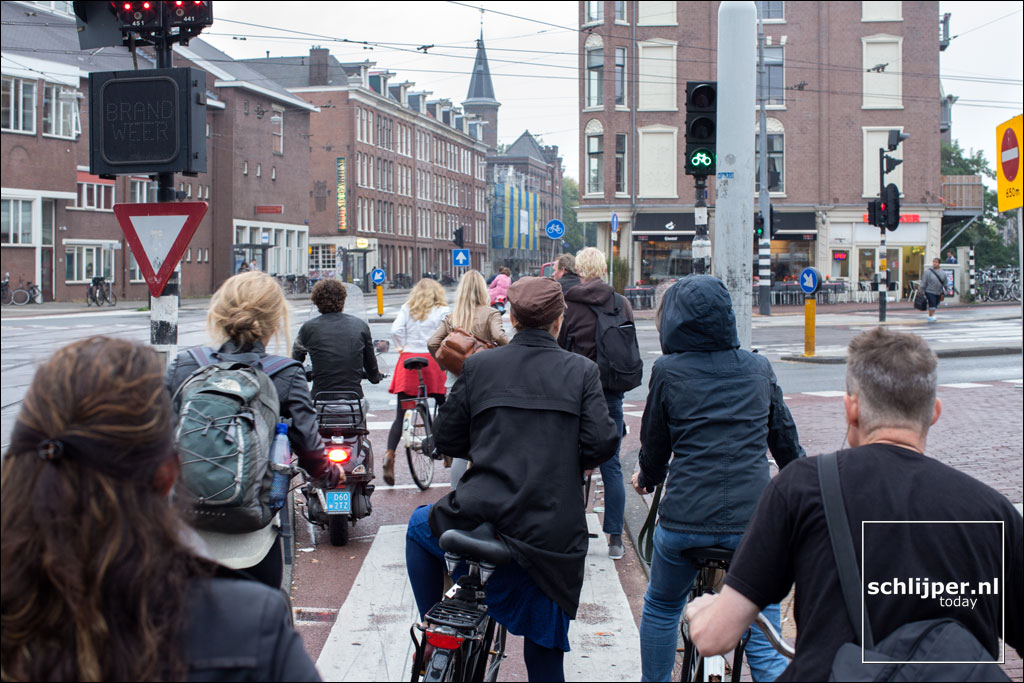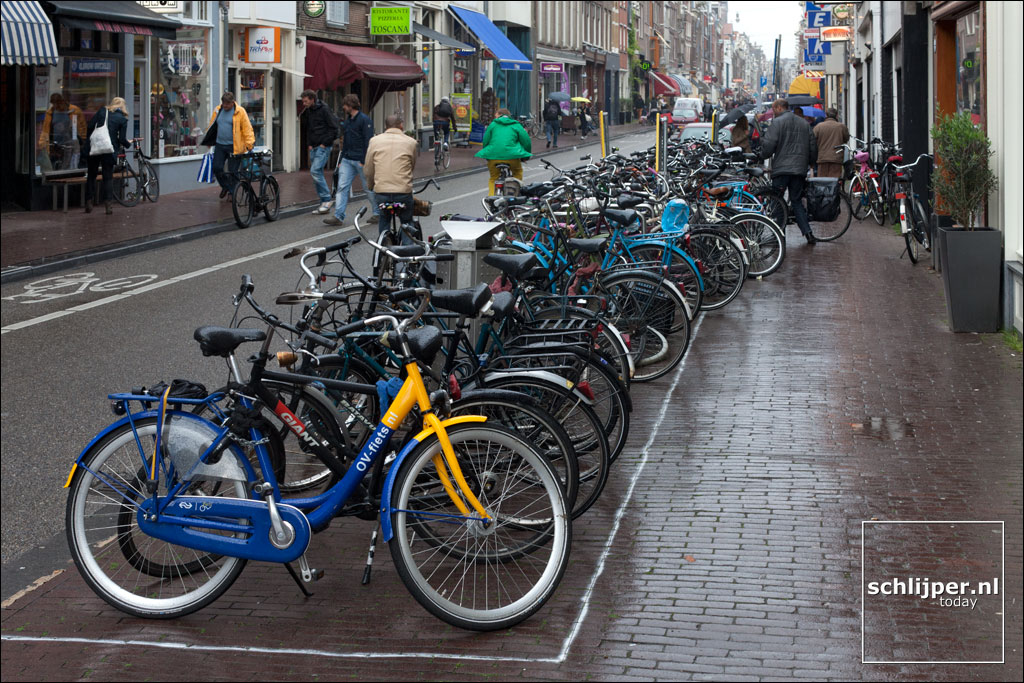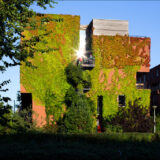Amsterdam Bike Porn
This blogpost is coauthored by Jean Roe and Cornelia Dinca, with photos by Thomas Schlijper.
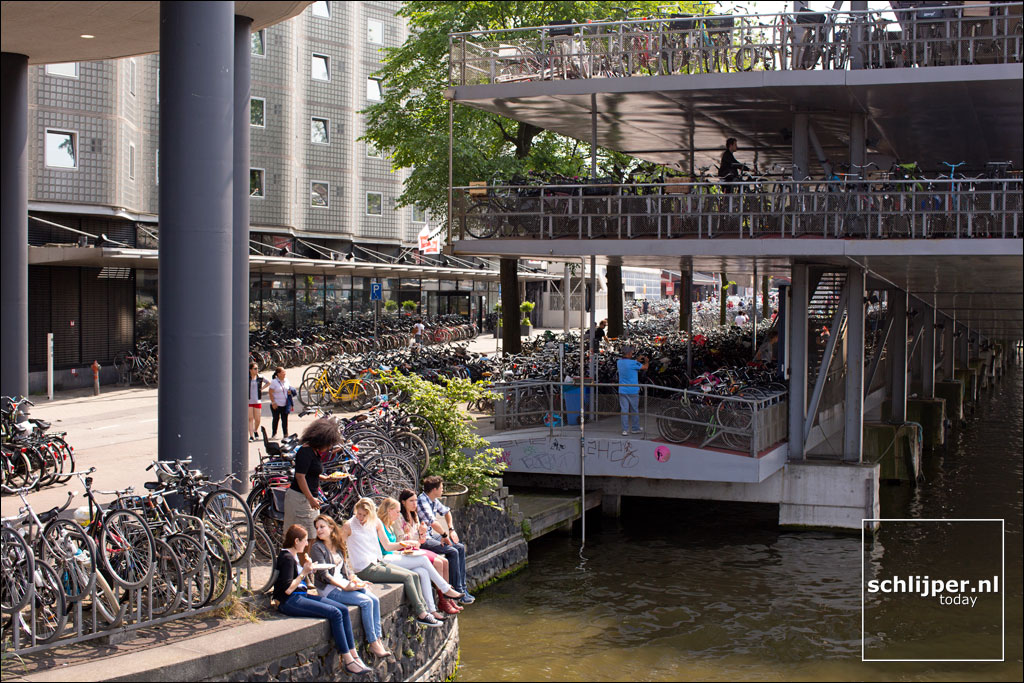
The minute you exit Amsterdam’s Central Station, you know it is a bike city. The thousands of bikes parked in the three-story parking lot outside Central Station is an iconic piece of cycling infrastructure that has become synonymous with Amsterdam as a bicycle city. In this post, we look at nine other important design and infrastructure elements that make biking efficient, safe and fun in Amsterdam.
1. Extensive and connected network of bicycle lanes
There is a total of 500 km of separated bike lanes within Amsterdam, which is the backbone of an all ages and abilities network. Amsterdam also has 900km of residential roads, which are generally narrow, have many speed bumps, and a speed limit of 30km/hr. With such an extensive network of low-speed or separated routes, you do not need to re-route your bike journey based on a few, fragmented places for a safe ride. Virtually every street in the city is a bike street!
2. Protected intersections
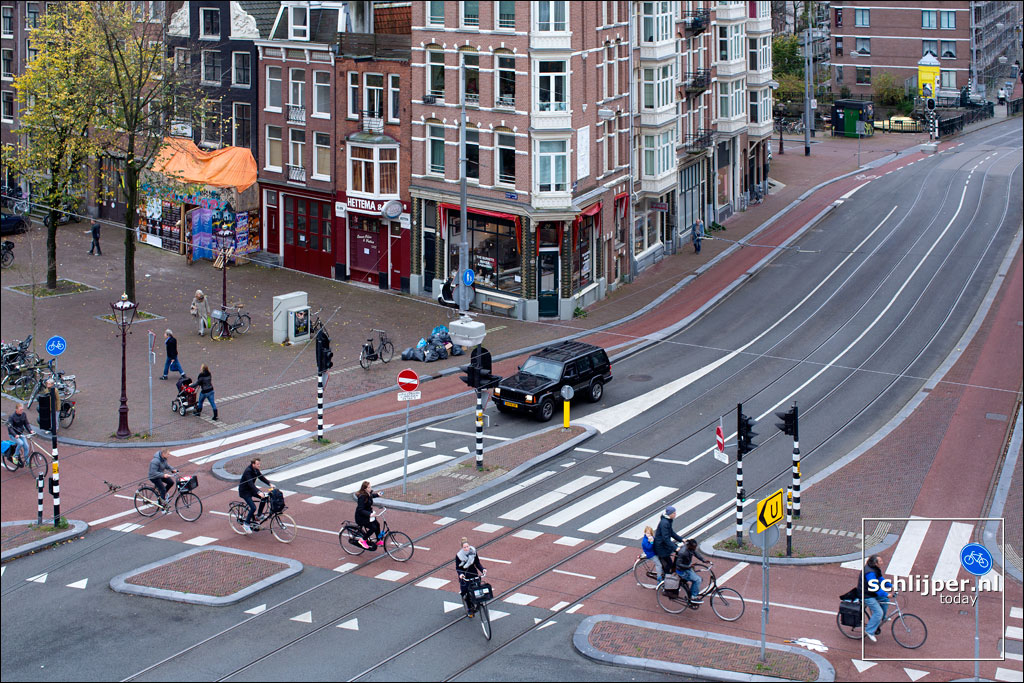
Arguably the most important of Dutch infrastructure basics is the protected intersection which is seen at almost every controlled or major crossing in Amsterdam. These are important because intersections are the main points of conflict where different users come in contact, and where accidents occur, as explained and illustrated in this video. It doesn’t matter how great your bike lanes are if your intersections are not safe – this is why we hope the Dutch intersection design becomes the standard in cities all over the world!
3. Central Station tunnel
The much anticipated pedestrian and bicycle tunnel underneath the Central Station has been an instant success and a new favorite piece of infrastructure. The tunnel improves accessibility for pedestrians and cyclists who previously had to pass through the station or travel around it to reach the river on the north side. The 110 meter tunnel features and impressive mural depicting Amsterdam’s waterfront in the 1700s and sound absorbing surfaces on the cycle lane portion reduces noise and improves user experience.
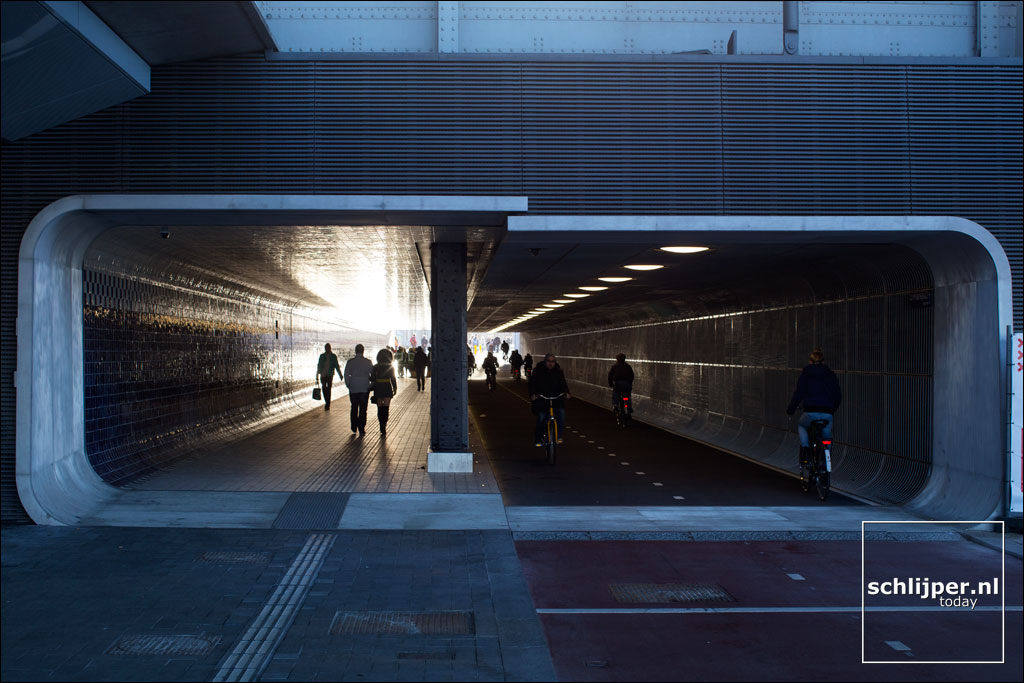
4. Rijksmuseum bicycle path
This is the intersection of Amsterdam’s great cultural capital and brilliant cycling infrastructure. When the Rijksmuseum was designed and built in the late 1800s, the underpass was meant to accommodate a tramline connecting the old town to the new southern districts. The tramline was never built, though motor traffic was allowed through until 1931. Despite it being one of Amsterdam’s most beloved bicycle lanes, the passage was almost shut down as many of the museum directors wanted to convert it into an atrium. After fierce debate, the local cyclists association won the fight and we don’t envision anyone suggesting the tunnel should be closed off to cyclists any time soon!
5. Vondelpark cycle way
Vondelpark is Amsterdam’s most popular park, and unintentionally one of the city’s busiest cycle routes! The almost two kilometers pathway connects the city’s south-western districts to the center, making for a pleasant noise and traffic free ride. Learning from its success, the city has been strengthening the design and experience of other bike paths through parks.
6. Underground Parking
Amsterdam is struggling to create enough parking spots for the more than 800,000 bikes in the city. There are currently over 250,000 parking spots throughout Amsterdam, and development is underway for more. In Leidseplein, one of Amsterdam’s busiest square, 2,000 underground spots are currently being built. At the Amsterdam South Railway station, an underground garage that fits 2,500 bikes is underway. These measures are important because bicycles encroaching into pedestrian and public spaces is a growing problem in the city.
7. Nescio Bridge
The Nescio bridge is a reward winning bicycle and pedestrian bridge that connects the city to its newest suburb: Ijburg, to the East. It is the longest bicycle and pedestrian bridge in the Netherlands. It has a clean span of 170 meters, and at 11 metres above the Amsterdam Rhine canal, it allows ships to pass freely underneath. The Nescio Bridge is the Netherlands’ only single cable suspension bridge, and a treat for cycling enthusiasts.
8. Green Wave
Many of the bicycle lights in the city are timed to allow a “green wave” of bicycle and tram traffic. There are also push-button sensors that turn the light green quicker for bicyclists when activated. We hope that in the near future, Amsterdam will follow Rotterdam’s lead and program traffic lights in favor cyclists even more when it rains, to get them home safely, faster and drier.
9. OV Fiets
For 24 hours and 3.14 euros, residents can rent a bicycle at any main train station in the Netherlands. These blue and yellow bikes are seen as a way to extend your public transit journey. Currently, this bike rental system is only available for locals with transit memberships, but hope the system will be expanded in the future.
What most visitors and residents often don’t realize is that this fantastic infrastructure was gained through hard work by residents (including children!) who in the 1970s and 1980s fought against cars for the right to dedicated and safe infrastructure. Amsterdam’s successful cycling culture is the result of this great infrastructure combined with softer measures such as universal cycling education, legislation that protects vulnerable road users, and arguably, a tolerance for cycling disobedience.
